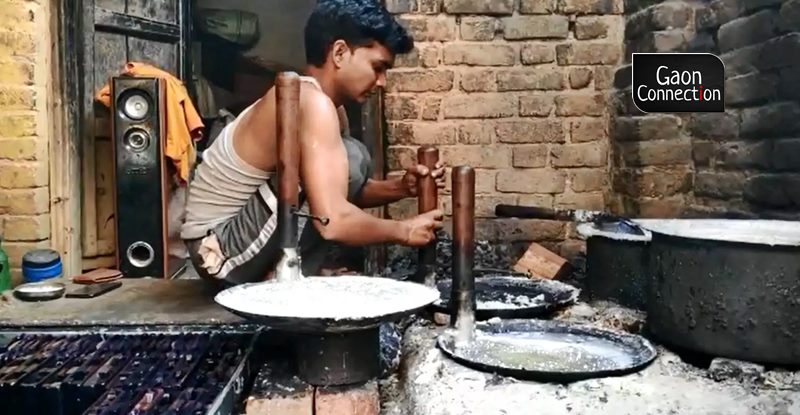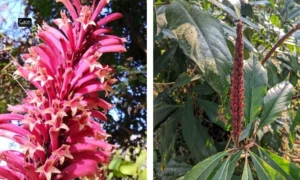Etah, Uttar Pradesh
Diwali is synonymous with kheel, batashe and khilone (sugar toys). Markets are decorated with colourful kandeels and lights while local kaarigars (artisans) sell sugar toys shaped into minaret, lion, elephant, Taj Mahal, duck, fish and more. Dhanteras is also a day when buying silver coins or steel utensils is considered auspicious.
However, the influx of fancy sweets and packaged mithai has hit the traditional sugar toy makers who find it difficult to sell their finely crafted ‘sweet’ toys. The livelihood of sugar toy makers of Etah district in Uttar Pradesh have been hit too. And these traditional artisans are fast disappearing.
“About five years ago, the kaarigar of sugar toys were easily available but now those are hard to find. They have all switched their profession as there is little demand for the sugar toys in the market,” Mohammad Yunus Faridi, a sugar toy artisan who has been in the profession for generations, told Gaon Connection.
Also Read: Diya-makers of Sonbhadra seek a flicker of hope in their own lives
“Now people are more interested in modern sweets made by halwai and the craze for our sugar toys is hardly anywhere to be seen,” the artisan from Marehara town in Uttar Pradesh’s Etah district added.
As per Faridi, when the market of sugar toys was doing well about five-six years ago, he used to prepare toys from an estimated 700 kilogrammes (kgs) of sugar.
“Now, it has reduced to 400 kilos (kgs). It gets difficult to even pay the labour rate to other artisans who make these toys under my supervision,” said the sugar toy maker. “The price of sugar is also rising. A kilo of sugar costs around Rs 40. Our toys get sold in the wholesale market at around Rs 50 per kilo. You can imagine how bad the situation is,” Faridi said.
Mohammad Yunus, another artisan, told Gaon Connection that sugar toy production involves the use of raw materials like saatri (citric acid) which ensures that the toys are bright white in colour.
“Its price has increased from Rs 100 per kilo to Rs 250,” Yunus said.
‘Advertisements to be blamed’
Faridi’s neighbour and a fellow sugar toy artisan Islam Abbasi said that the pomp and show about packaged sweets which is widely advertised on the television is to be blamed for the reduced demand.
“Even today, the elderly people are fond of sugar toys but the young generation is attracted to the fancy sweets. Diwali used to be incomplete without the toys that we make but is no longer the case,” Abbasi told Gaon Connection.
“Kheel, bataashe and khilone (puffed rice, sugar candy and sugar toys) were the traditional offerings that were used in the rituals but the fancy sweets have occupied that space now. People nowadays prefer expensive sweets to distribute among their friends and relatives,” he added.
The sugar toy maker informed Gaon Connection that 10 kgs of sugar is used to produce nine kilogrammes of khilone. “The kaarigar we have are experts in making toys in the shape of a minaret, lion, elephant, Taj Mahal, duck, fish and many other things. Kids used to be excited about these shapes but not anymore. Their world has changed, it seems,” Abbasi said softly.
Disappearing artisans
Etah’s Marehra town is known for large-scale sugar toy production but the number of kilns that produce these sweetmeat have reduced significantly in the past 10 years.
“Earlier, about ten years ago, there were 10 bhatti (kilns) that used to produce sugar toys. Now, there are only five such units left. They are also struggling to sustain themselves,” Mohammad Yunus, an artisan, told Gaon Connection.
Also Read: Despite regulations, lead in paint remains a health concern in India
“Also, the outbreak of dengue has spoiled the Diwali festivities in this season. In the nearby village (Sirsa Badan), villagers are left with little money for festivities as all their savings have been exhausted in availing treatment for their family members,” Yunus added.

















